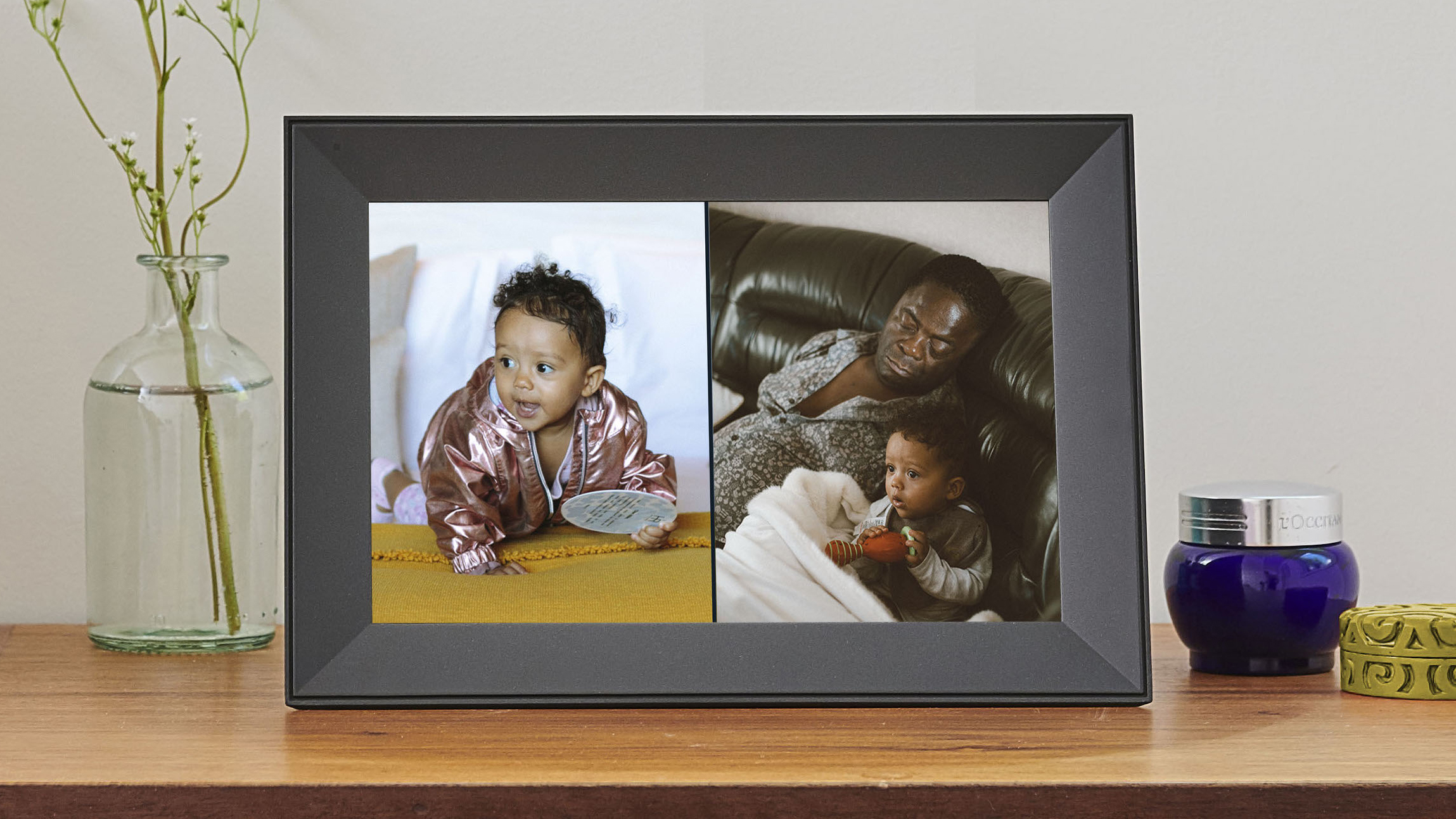
- #DIGIAL PHOTOFRAME HOW TO#
- #DIGIAL PHOTOFRAME FULL#
- #DIGIAL PHOTOFRAME SOFTWARE#
- #DIGIAL PHOTOFRAME FREE#
I also used 1 pin to connect the startup button to the Raspberry Pi board (see above). You can get 200 of the female connectors from Ebay for $0.99 (search: 2.54mm Dupont Jumper Wire Cable Housing Female Pin Connector Terminal).

I also used three female pin connector terminals (as shown above) and 1 pin for wiring the buttons to the Raspberry Pi GPIO pins. Again, I had a couple lying around, but you can get a dozen of the ones shown above from Amazon for $7.99. A couple of small push buttons to mount on the case for startup and shutdown. But if you get an acrylic case you're probably going to want some acrylic cement or clear tape to hold it together. I had some acrylic cement laying around, so it wasn't really an issue. I managed to break 3 of the 4 assembly tabs even trying to be pretty careful with it. This one worked for me, and had room to mount the startup and shutdown buttons, but acrylic is very brittle. I got the acrylic "TSV Raspberry Pi 3 Case" from Walmart for $5.04. I got two 6' HDMI cables for $2.49 on Ebay.Ī case for the Raspberry Pi (optional - but kind of nice). I had one laying around, but you can get a good one from Amazon for $10.99: Raspberry Pi 3 Power Supply 5V 2.5A Micro USB AC Adapter Charger US PlugĪn HDMI cable. It turns out that most USB cables are too skinny and give you a low voltage fault. Make sure and get one that puts out enough current and get a cable that can carry the current. You can also use the Raspberry Pi 3 B, but there are small differences.Ī power supply and cable.
#DIGIAL PHOTOFRAME FULL#
Acer SB220Q Full HD (1920 x 1080) IPS Ultra-Thin Zero Frame Monitor I got this excellent 21.5" display for $89.99 at Amazon.

Without the mouse it just does its own thing.Ī computer monitor with HDMI input. So I ended up with a mouse after all, but it doesn't need one. Ultimately I ended up configuring a mouse to do those controls. I planned to use three buttons for that hooked up to the GPIO pins. Basically I wanted to simply be able to step forward and back, and be able to pause on an image. And finally, I wanted to be able to control it manually when desired. I also wanted it to autostart so that when it powers up it goes directly into the slideshow without any action from me (again - no keyboard and mouse). It's actually quite easy - I just had to figure out why the various approaches weren't working for me.
#DIGIAL PHOTOFRAME HOW TO#
With a disturbing amount of research I found out how to do it. I wanted a way to safely turn it on and off without a keyboard and mouse (just pulling the power on a Raspberry Pi can corrupt the operating system). I wanted to configure it so the screen would not blank out after a set interval. I did however want a few minor things that aren't covered in that instructable.
#DIGIAL PHOTOFRAME SOFTWARE#
And that's basically what the above instructable offers - without any proprietary software etc.

I'll just put my pics on the thumb drive and it should display them. I don't want or need to control it from 1000 miles away, don't need to email it pictures, etc. I wanted a simple digital frame that would simply run through the images on a USB thumb drive. In the end I found this excellent instructable and based my project on it. In some cases you have to buy software that others wrote, and I kind of didn't want to do that. Unfortunately, most of them were really not quite what I wanted. So I did the normal Googling and found that there were a bunch of options for making a digital picture frame based on the Raspberry Pi. I've been playing with Arduinos for years, and have wanted a good project for the Raspberry Pi, and this seemed like the perfect one. Obviously I could've just bought a new one, but I figured that's exactly what the man wants me to do! Instead, I could spend a ridiculous amount of time building my own - but also having some fun and learning something along the way.
#DIGIAL PHOTOFRAME FREE#
I figured they'd be practically free by now. I looked for a replacement on-line, and found that a comparable replacement actually cost more than my 10 year old frame. After 10 years, my store-bought digital picture frame failed.


 0 kommentar(er)
0 kommentar(er)
